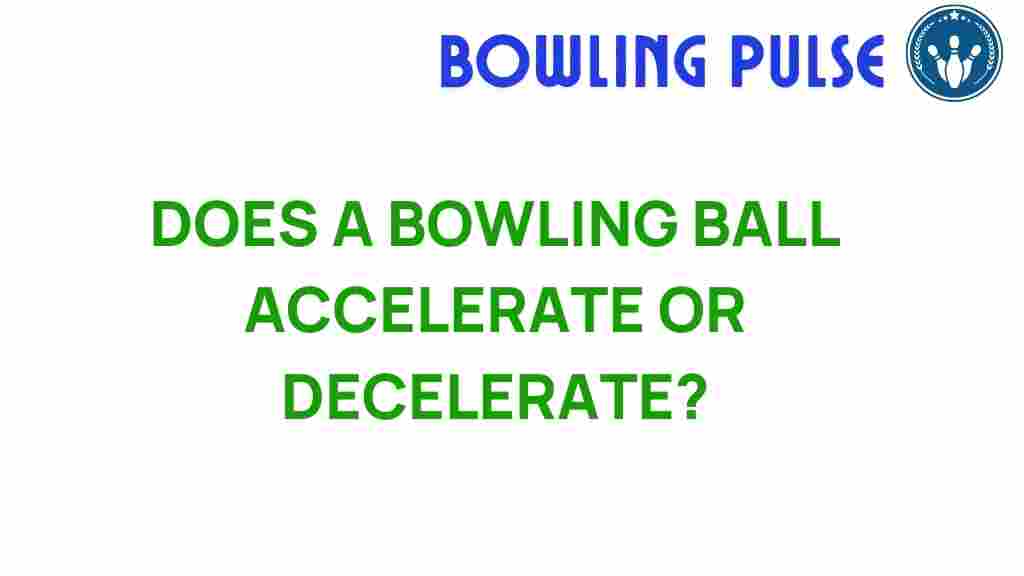The Mystery of Bowling Ball Dynamics: Accelerating or Decelerating?
Bowling is not just a game of skill; it is also a fascinating field of study that involves the principles of physics and sports science. Understanding bowling ball dynamics can significantly enhance your performance, whether you are a casual bowler or a competitive player. This article will delve into the intricacies of acceleration and deceleration in bowling, the physics behind it, and how various bowling techniques can affect your game. We will also explore equipment analysis and give you tips to troubleshoot common issues related to bowling performance.
Understanding Bowling Ball Dynamics
At its core, bowling ball dynamics refers to the study of how a bowling ball behaves in motion. This includes the forces acting on the ball, the effect of friction with the lane, and how these factors influence the ball’s acceleration and deceleration. Let’s break down these concepts:
- Acceleration: This is the rate at which the bowling ball increases its velocity after it has been released. It is influenced by the bowler’s technique, the angle of the release, and the force applied.
- Deceleration: After reaching its peak speed, the ball will begin to decelerate due to friction with the lane surface and air resistance. Understanding how to control deceleration is crucial for achieving a strike.
The Physics of Bowling
The physics of bowling involves several fundamental concepts, including Newton’s laws of motion, friction, and angular momentum. Here’s how they apply:
- Newton’s First Law: A bowling ball in motion tends to stay in motion unless acted upon by an external force. This means once your ball is rolling, it will continue unless friction slows it down.
- Friction: The interaction between the bowling ball and the lane surface plays a significant role in its deceleration. Different lane conditions, such as oil patterns, can change the friction and affect how the ball behaves.
- Angular Momentum: When the bowler spins the ball, it creates angular momentum, which affects the ball’s trajectory and how it hooks towards the pins.
Bowling Techniques for Optimal Performance
To master bowling ball dynamics, it’s essential to employ proper bowling techniques. Here are some techniques that can help you optimize acceleration and deceleration:
- Proper Grip: A firm but relaxed grip allows for better control and release, which impacts acceleration.
- Approach and Release: The approach should be smooth and consistent. The release should ideally occur at the bottom of your swing to maximize speed.
- Follow-Through: A strong follow-through can enhance acceleration and ensure a straighter shot.
Equipment Analysis in Bowling
The right equipment can have a significant impact on bowling performance. When considering equipment, focus on the following:
- Bowling Balls: Different balls have varying weights, core designs, and surface textures, all of which affect how they accelerate and decelerate.
- Bowling Shoes: Proper footwear can improve your approach and balance, directly impacting your release and overall dynamics.
- Bowling Accessories: Items like wrist supports or finger grips can provide additional control during the throw.
Step-by-Step Process to Master Bowling Ball Dynamics
To fully grasp the concept of bowling ball dynamics, follow this step-by-step process:
- Understand Your Ball: Know the specifications of your bowling ball, including its weight and type.
- Practice Your Technique: Regular practice focusing on grip, stance, and release will improve your consistency.
- Experiment with Speed: Try varying your speed to see how it affects your scores.
- Analyze Lane Conditions: Pay attention to how different oil patterns affect your ball’s behavior.
- Record and Review: Use video analysis to review your technique and make adjustments.
Troubleshooting Common Issues in Bowling Performance
Even seasoned bowlers encounter challenges. Here are some common issues and troubleshooting tips:
- Inconsistent Release: If your ball doesn’t release consistently, try adjusting your grip or practicing your follow-through.
- Ball Hooking Too Much or Too Little: If your ball hooks excessively, consider reducing your spin; if it doesn’t hook enough, adjust your hand position during the release.
- Poor Pin Action: If your ball isn’t striking the pins effectively, evaluate your speed and angle of entry into the pocket.
Conclusion: The Art and Science of Bowling Ball Dynamics
Understanding bowling ball dynamics is crucial for any bowler seeking to improve their game. By mastering the concepts of acceleration and deceleration, utilizing effective techniques, and analyzing your equipment, you can significantly enhance your performance on the lanes. Remember, bowling is both an art and a science, and the more you engage with its principles, the better you will become.
For more in-depth resources on sports science and bowling techniques, check out this comprehensive guide. Additionally, if you’re looking to refine your skills further, consider reaching out to a local bowling coach for personalized training.
Embrace the mystery of bowling ball dynamics, and you will find your game elevating to new heights!
This article is in the category Techniques and created by BowlingPulse Team
